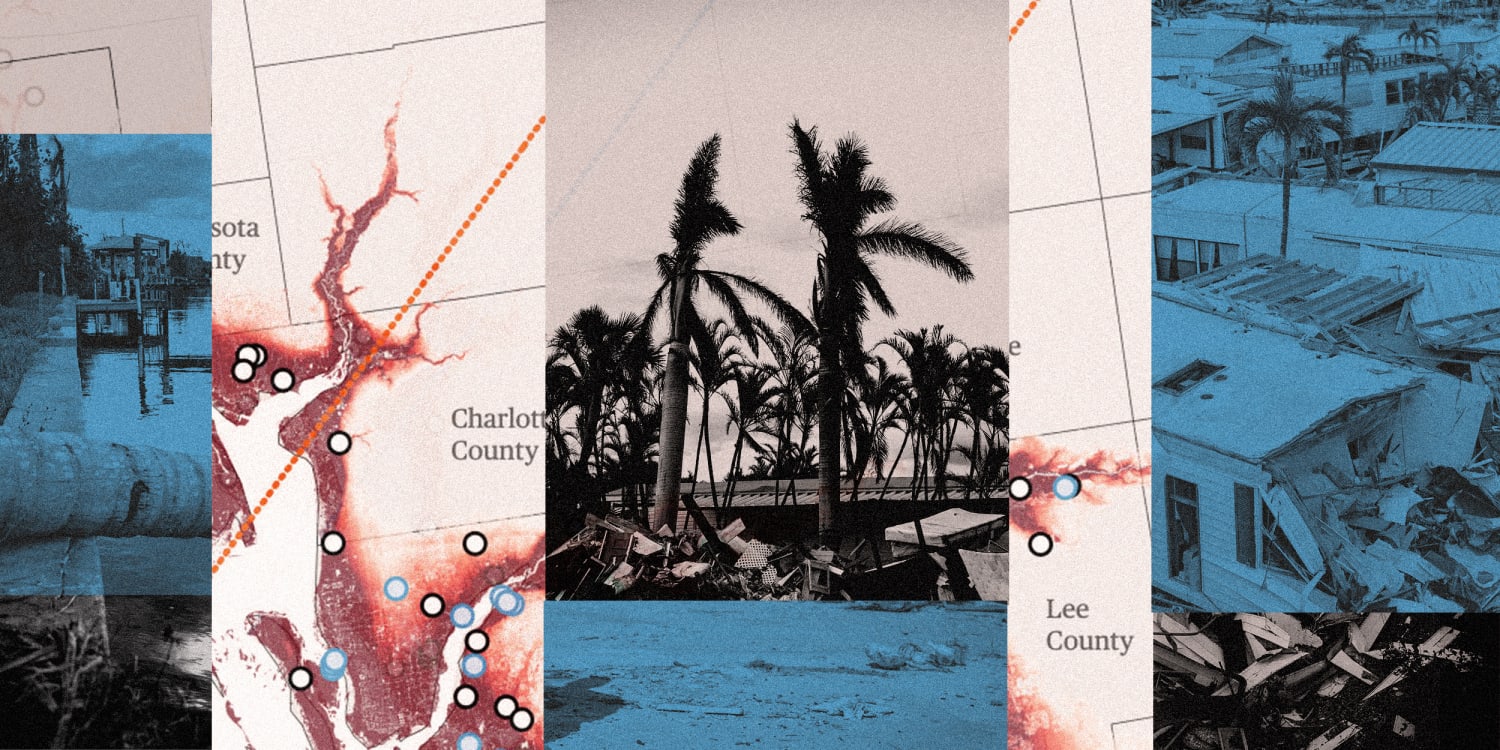Collson, an avid cook who liked to kid and laugh, stuck firmly to her decision not to leave home, Jim said. Her resolve began to weaken two days before the storm, when she looked into a shelter. But the shelter didn’t have any beds available, just a wheelchair. Collson told her brother she didn’t want to ride out the storm that way — she wasn’t comfortable requiring so much help with so many people around her. Jim and her health aide pleaded with her to change her mind.
On Sept. 27, the day before Ian’s expected arrival, Lee County officials issued a mandatory evacuation order for people close to the coast, including Collson. The order was in response to a change in Ian’s forecast path, which shifted to the south and put Ian on course for a direct hit on the Fort Myers region.
Early the next morning, Collson began to seriously worry. She dialed 911 for help but was told it was too late; rescue operations were on hold until the storm passed, Jim said.
Ian tore through a few hours later, bringing 150 mph winds and a wall of water higher than the area had seen for decades. Collson, who lived on a finger of land 5 miles from the island where the hurricane made landfall, texted Jim as conditions worsened. “The back door just blew off and the water’s coming in,” she wrote that afternoon.
It was her last message to her brother.
Collson’s body was found two days later, in the water several hundred feet from where she lived.
“We were just hoping for the best,” Jim said. “And then we saw satellite pictures of the house, and we knew. We knew it was not a good chance she made it.”
Why warnings went unheard
One of the most common reasons people chose not to leave areas at high risk of storm surge was that they had survived hurricanes before unscathed.
It is human nature for people to measure their risk in a coming storm by comparing it to storms they’ve weathered in the past. But that calculation is wrong, experts say. Every hurricane is different, and slight changes to its path or strength can dramatically change the level of surging water.
As Ian made its approach toward Florida’s southwest coast, many residents thought of the last major storm to come through: Irma, a Category 3 hurricane in 2017, for which nearly 7 million people statewide evacuated. Irma’s forecasts had originally put Fort Myers and the rest of Lee County at risk of a direct hit, with storm surges of up to 15 feet. But the storm shifted east and weakened, and it arrived at low tide.
The $50 billion in damage statewide made Irma Florida’s fifth-costliest hurricane at the time, but the storm still wasn’t as destructive as forecasters had feared. The big surge didn’t happen. Lee County suffered none of the state’s 123 Irma deaths.
That experience influenced many people’s decisions not to flee Hurricane Ian.
Michael Yost was one of them.
Yost moved to Florida 13 years ago from Indiana, and in that time he heard predictions of hurricanes’ bringing deadly storm surges that didn’t come true, Hurricane Irma included.
He had heeded calls to leave before Irma because the Fort Myers Beach home he was living in at the time looked like it was “held together by staples,” he said. It was devastated by Irma’s winds, but many people in the area had returned to undamaged homes.
So as Ian approached the coast, Yost didn’t feel urgency to leave. Living in the same town but in a new home that felt sturdier, he assumed the predictions about storm surge would once again not come to fruition.
“A lot of it came down to the people who cried wolf too many times and nothing happened,” said Yost, 56.
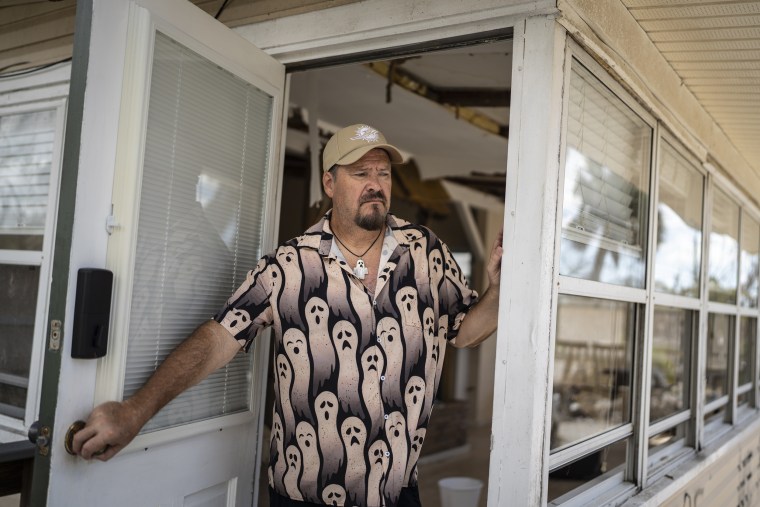
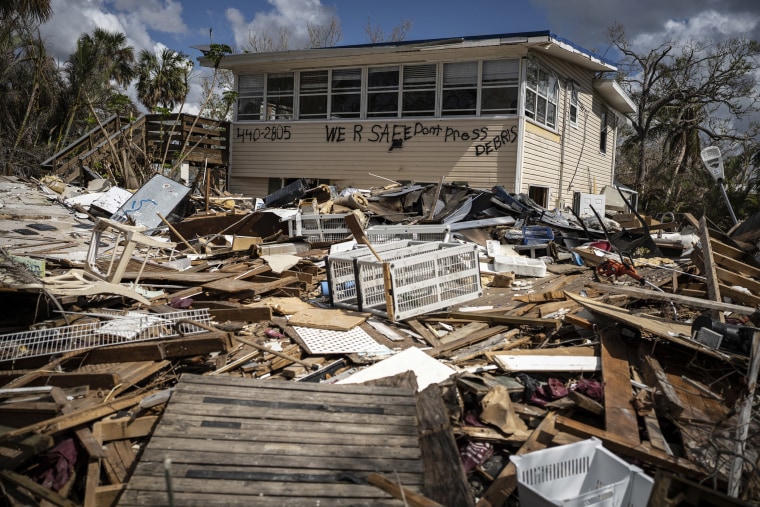
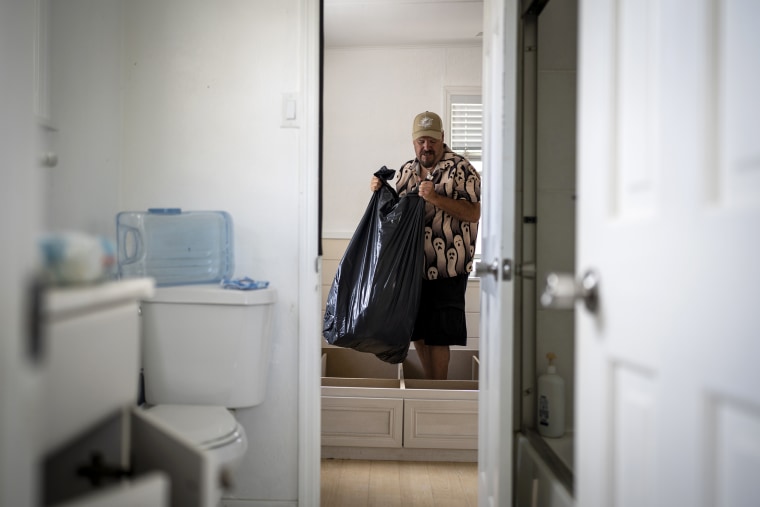
The weekend before Ian hit Florida, forecasters projected that the storm posed the biggest threat to the Tampa area, north of Fort Myers, according to the National Hurricane Center. That began to change on Sunday, Sept. 25, when Ian’s projected path began shifting south, with a growing threat to Lee County. The projected path continued moving south through Monday, the center said.
During those hours, from Sunday night through Monday, forecasts outlined the possibility of storm surge in the Lee County area of up to 7 feet.
Lee officials did not yet issue an evacuation, saying Ian’s path remained uncertain. This appears to contradict their own emergency management plan, which calls for evacuations of highest-risk areas with forecasts of 3 to 6 feet of storm surge.
Nearby counties, including Charlotte, issued mandatory evacuation orders for their riskiest areas on Monday afternoon.
Betsy Clayton, Lee County’s spokeswoman, said in an email that Lee’s evacuation order was a “collaborative decision made based on the totality of known circumstances and factors at that time.” The county finally issued the evacuation order when storm surge predictions “drastically increased” the day before landfall, Clayton wrote.
To prepare for such moments, the National Hurricane Center produces maps that show how bad storm surge can be in any particular place on the U.S. coast. The maps are supposed to help people understand their risk and plan what to do when big storms come — and help local governments determine which areas should be evacuated. The agency uses the maps in public education campaigns around the country before the annual start of hurricane season.
“We try to educate people on those worst-case scenarios and their vulnerability,” said Cody Fritz, a storm surge specialist at the National Hurricane Center. “Providing visuals of their vulnerability speaks louder than saying it out loud.”
The message doesn’t always get through.
Elizabeth Dunn, who leads a Hillsborough County community emergency response team that knocks on doors to spread awareness of storm surge threats, said many residents, particularly older ones, still don’t fully understand the danger of not evacuating high-risk areas. Many have moved to Florida in recent years from places where they’d never experienced hurricanes.
“You start explaining to them that this area could get up to 20 feet of storm surge, and they say: ‘What do you mean? Nobody’s ever told me that,’” said Dunn, who teaches disaster response and management at the University of South Florida. “Some people don’t understand the extremes of the risks sometimes and what’s possible.”
Robbie M. Parks, an assistant professor of environmental health sciences at Columbia University, said that for many people, evacuation is an out-of-reach luxury. Weighing the probability of a deadly storm surge against a crowded shelter or taking into consideration health problems or lack of transportation, many people choose to wait out storms.
“It’s easy to criticize people for not making the right decision from the outside looking in, but there are many, many factors which can play into that decision,” Parks said.

Michael Verdream moved last year from California to Matlacha, where he rented a one-story house and remodeled homes for a living. He’d never been through a hurricane before, and he didn’t have a car.
The morning the storm hit, Verdream, 66, told his niece Stacy Verdream that he planned to ride it out. At 2:30 p.m., he spoke to another relative, saying the water was 4 feet high and he had to hang up, Stacy said.
His body was found two days after the storm in a canal near his home.
“I wish he would have called,” said Stacy, who lives in Orlando. “I would have gone and picked him up.”
‘I was ready to say my last prayer’
By dawn on Tuesday, Sept. 27, Ian’s projected path put Lee County in the storm’s crosshairs. Over the previous 24 hours, the expected landfall had shifted about 80 miles south, according to the National Hurricane Center. At 7 a.m., Lee County officials ordered a mandatory evacuation for the county’s highest-risk areas. The directive expanded throughout the day to include other imperiled areas. By then, the center was warning about surges as high as 12 feet.
There wasn’t much time to get out. Lee County’s emergency management website says it can take 41 hours to evacuate people; Ian made landfall about 32 hours after the first evacuation order.
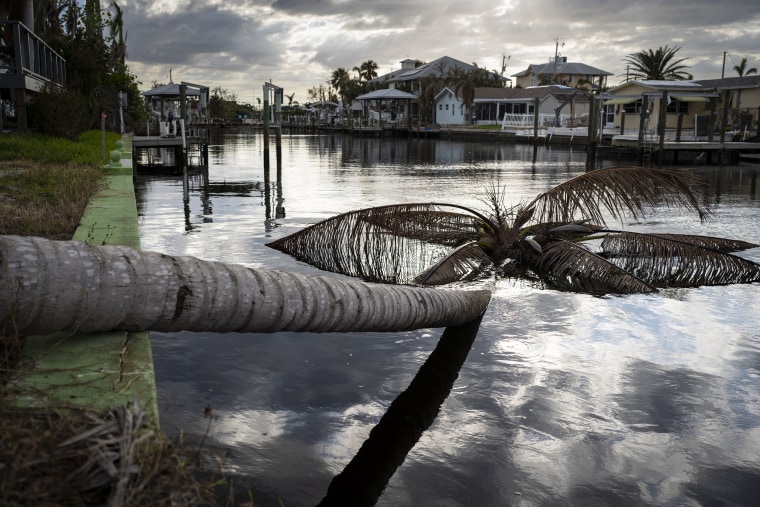
The Tuesday morning order surprised Matthew Hoffman, who has lived in Fort Myers Beach for more than a decade. He contrasted the delay to what happened during Hurricane Irma, when the county’s evacuation order was announced three days before landfall. Hoffman had evacuated for that storm.
But Lee County had kept its schools open on Monday, Sept. 26, two days before Ian’s arrival, as did Charlotte County. Hoffman, who has three kids and pets, took that as a sign that officials didn’t see a big threat. By the time the evacuation orders came, Hoffman recalled thinking, it was too late. “To make those arrangements is a little complicated to do at the last minute,” he said.
On the morning of Sept. 28, officials ordered people who hadn’t left to shelter in place, because venturing out could put them at greater risk. They were now on their own. The storm hit that afternoon.
Hoffman and his family watched with alarm as the water rose around their house, cresting just short of the walls. “There was nothing else we could really do,” he said.
They survived, and their house wasn’t seriously damaged.
Yost, the Fort Myers Beach man who’d also decided to stay, said he learned that he was in the most dangerous surge zone only the night before Ian made landfall, when a radio broadcast informed him that his home was at risk of storm surge of more than 9 feet in a Category 4 hurricane. By then, Yost, who doesn’t have a car and gets around on an electric bicycle, didn’t think he had much choice but to remain.
The surge snapped Yost’s mailbox, rising from about 3 feet to about 10 feet in 10 minutes. Houses floated by. Trucks bobbed past. He screamed at the storm from behind rattling windows. He and his girlfriend made a plan to hop on an air mattress if they needed to make a last-ditch attempt to save themselves. But the water finally stopped rising.
After the storm, he climbed out of his house and went looking for his two closest friends in Fort Myers Beach, Mitch Pacyna and Daymon Utterback.
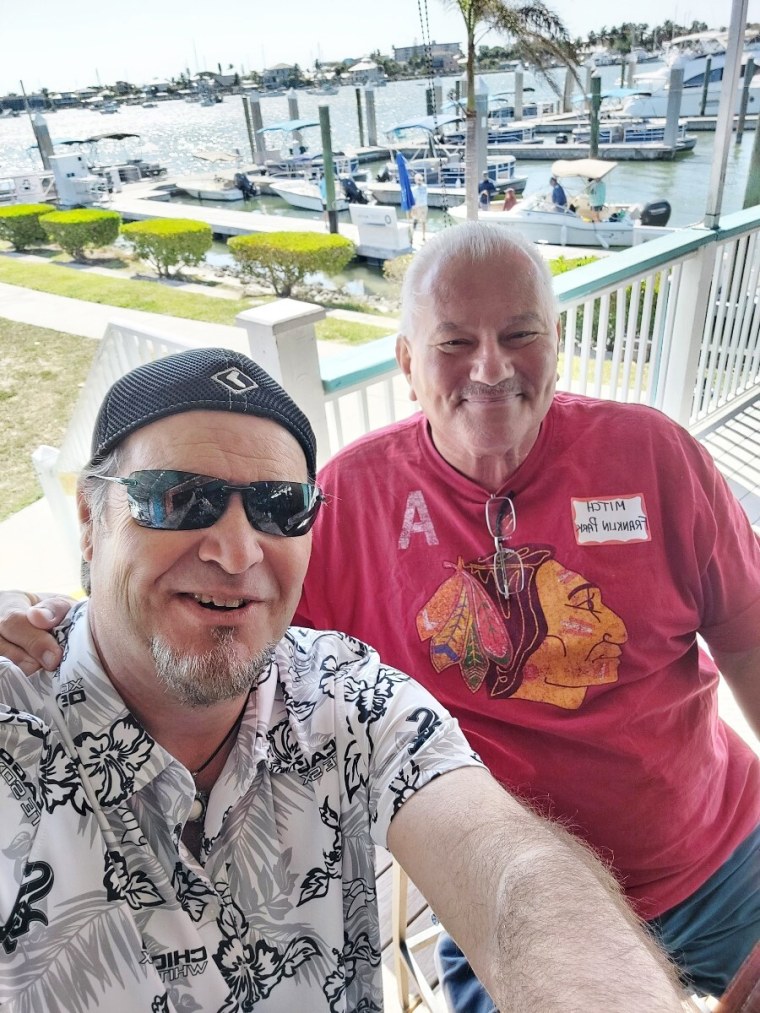
Yost went to check on Pacyna first and discovered his house had been destroyed. As Yost stood looking at the debris, a neighbor came over to tell him that Pacyna hadn’t survived. Stunned, Yost went to Utterback’s house. He found Utterback’s body stuck in a window. Both Utterback, 54, and Pacyna, 74, had drowned.
Yost said he and others were lulled into a “false sense of security” by past storms and the lack of urgency around Ian. “They really gave us a lot of heads up during Irma. It seemed like in this one, it was like, OK, tomorrow you gotta get out of here,” Yost said.
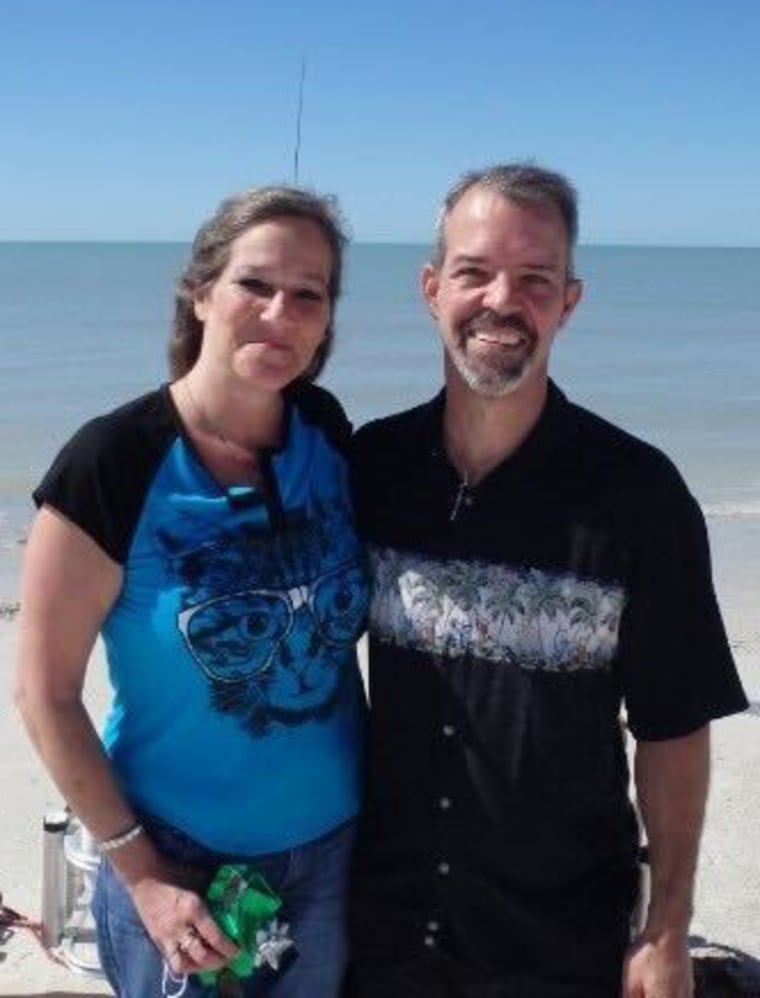
Theresa Conway, Utterback’s fiancée who he was slated to marry in April, said by the time they realized how bad the hurricane was, so much water was rushing down their street that they couldn’t get out — not even to cross to their neighbors’ elevated house.
Utterback began looking for ways for the couple to escape, while Conway tried to keep her head above the water as it rose toward the ceiling, she said. Utterback tried to get out the kitchen window but became trapped.
“The water got up to my neck. I was ready to say my last prayer and the water stopped and started receding,” Conway said.
She made her way to the kitchen, where she discovered her fiancé’s body.
Conway described Utterback, who loved to bring people a smile by dressing up as a pirate, as the “kindest, sweetest, big-hearted big kid.”
She said they were blindsided by the storm’s ferocity.
“It wasn’t supposed to be hitting us,” Conway said. “I never would have dare dreamed to have a hurricane like this hit Fort Myers Beach and for us to be on the worst side possible of it.”
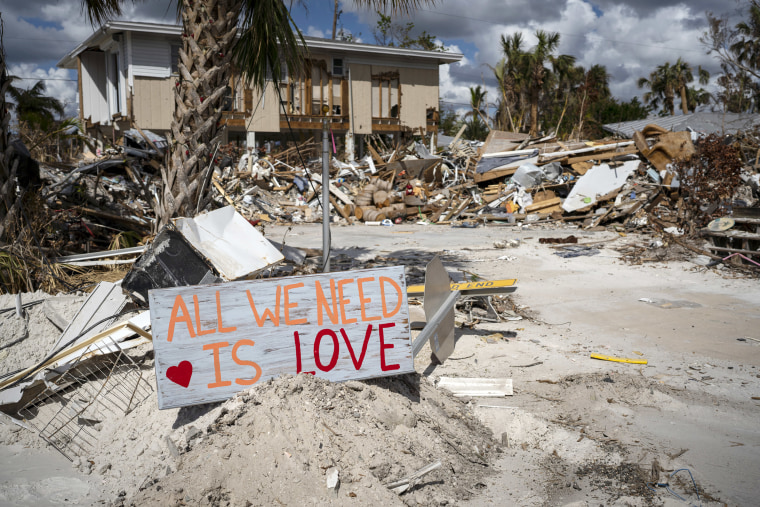
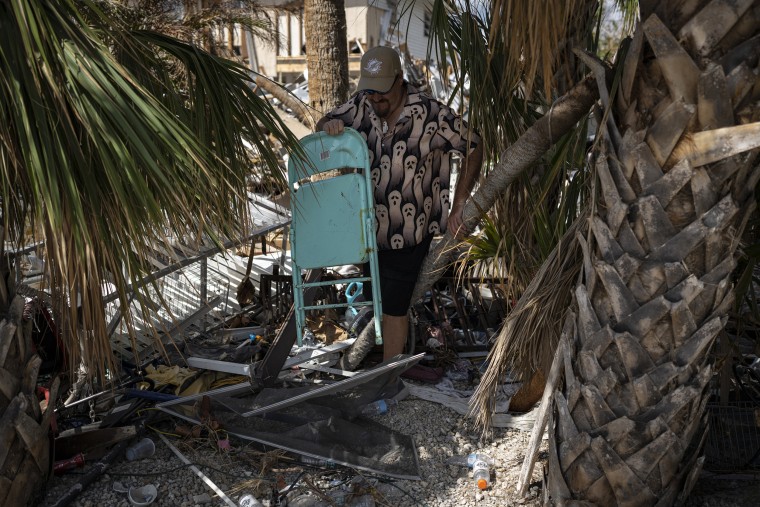
Lee County officials declined requests for interviews about how they prepare residents for hurricanes, communicate risks and decide the timing of evacuation orders.
Clayton, the county’s spokeswoman, said in an email that the government held about two dozen hurricane seminars for the public from April to August. The county’s emergency management director also hosted a “media day” with local news outlets and the county issued multiple warnings and notices on its website and on social media in the days and hours before the storm. And the county printed 48,000 “all hazards guides” for free distribution, Clayton wrote.
Like all counties in southwest Florida, Lee County maintains a registry for those who might need special-needs shelters. Lee’s has 2,700 people on it.
In neighboring Charlotte County, where nine people died from Ian, spokesman Brian Gleason said the government conducts a variety of public outreach efforts, including workshops about flood and storm-surge risks for people in high-hazard coastal areas. But the county relies more on social media, its website and an emergency messaging system to reach large numbers of people.
“Being prepared for a hurricane is understanding that if you’re in an evacuation zone and an evacuation is ordered, you carry out a disaster plan. What you do is up to you,” Gleason said. “Any death, whether it’s a car accident or storm surge, is tragic. Some are preventable. We expect that Hurricane Ian opened a lot of people’s eyes about the danger of storm surge and what to do if you’re in an evacuation zone.”
Experts said the decision about when to order an evacuation is hard to get right.
Craig Fugate, a former administrator of the Federal Emergency Management Agency and a former director of the Florida Division of Emergency Management, said ordering evacuations carries its own risks. “Everything from traffic crashes to moving vulnerable populations can result in deaths,” he said.
On the east coast of Florida, Volusia County opted for only a voluntary evacuation order ahead of Ian. That decision was partly based on initial forecasts for a hurricane that had weakened into a tropical storm, as well as Ian’s westward and inland approach into the county, said Jim Judge, Volusia County’s emergency management director. When storms and hurricanes come into the county from the east, officials typically mandate coastal areas to evacuate because those storms bring deadly surges off the Atlantic, he said.
Ian’s forecast called for heavy rains, but ultimately, the storm brought more rainfall than expected, and with stronger winds, Judge said. It slowed over Volusia County, dumping nearly 21 inches of rain in some areas and bringing gusts of up to 96 mph that battered coastal zones with near king tides, he said. Seven people died, three of them in high-risk surge zones.
Still, county officials said they made the right call.
“If we ring the alarm bell too loud every time, what happens is the public starts losing the sense of urgency or threat,” Judge said. “Then it’s: ‘Oh, they called for a mandatory last time and nothing happened.’”
A lesson for future storms
Plenty of people who stayed in the danger zone did so knowingly and willingly — and some refused offers of help.
They included Kristina Peters, 59, who chose to stay with her boyfriend in North Fort Myers, where they lived a baseball’s throw away from the Gulf of Mexico. Her son Robert DeMoss drove to her house soon after Lee County’s evacuation order was issued and begged her to come home with him about 15 minutes inland.
The forecasters were comparing Ian to Hurricane Charley, a Category 4 storm that hit the area in 2004. Peters had safely ridden that storm out at home, and she told her son she would be fine this time, too.
By the time Peters realized she was wrong, water had already started gushing into her home. Around 4:30 p.m. that day, Peters called DeMoss in a panic. “The water is rising,” she told him.
But he was alone at home with a newborn child, and the roads were too dangerous.
“Mom, I can’t come get you,” DeMoss recalled saying. That upset her. They hung up, and DeMoss hoped she’d be fine.
The next day, with phone lines down, he drove to her house and found her body.
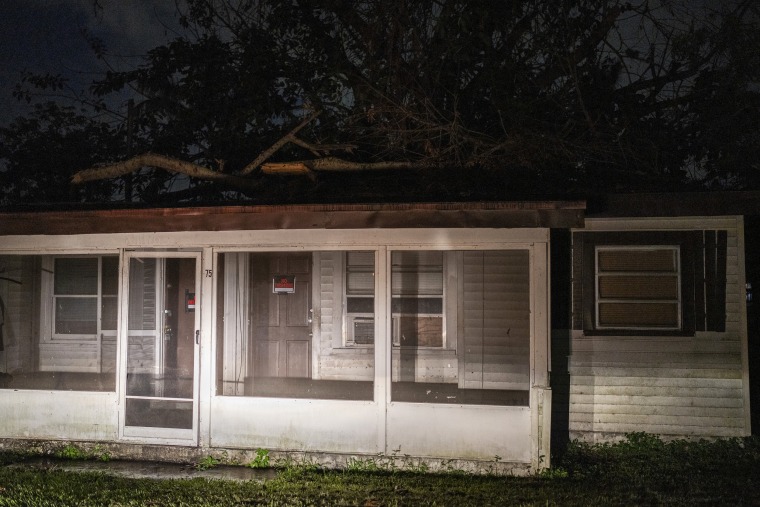
“There is no one to blame. There is no one to be mad at. There’s just me having to find peace with the fact that she has passed away and going through all those emotions and dealing with the phone call,” DeMoss said. “After it’s all said and done, the only thing that I hope is that she wasn’t mad at me.”
Daniel Noah, the warning coordination meteorologist for the National Weather Service in Tampa, said that regardless of the effort by local officials and forecasters, there will be people who don’t leave and die because of it.
“This is something we talk about every year, how to reach people,” he said. “We are banging our heads against the wall, because it keeps happening.”
In the end, Ian may have accomplished what years of education efforts and disaster planning didn’t: convince everyone on Florida’s southwest coast that hurricanes and storm surges kill.
“Hurricane Ian is going to be the strongest outreach messaging for southwest Florida ever,” said Gleason, the Charlotte County spokesman. “When you live through it, then that message sinks in deep and forever.”

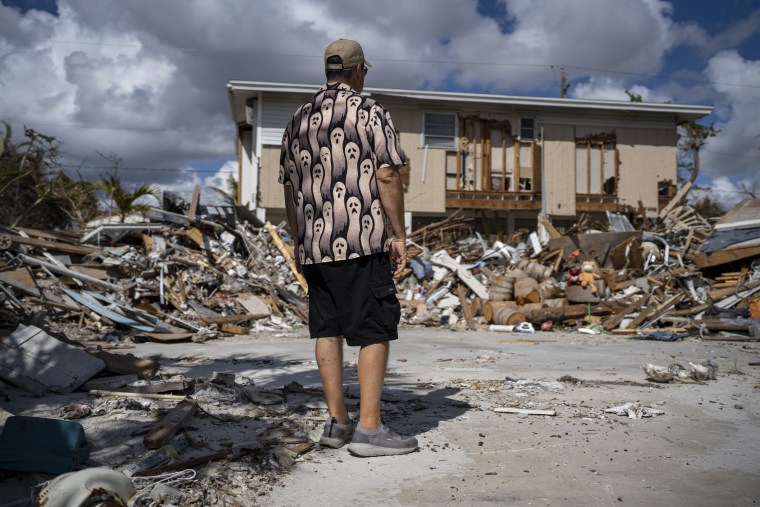
Methodology
NBC News reporters submitted more than 60 public records requests to local and state police agencies, medical examiners’ offices and emergency management agencies to collect 911 and emergency dispatch recordings, police reports, autopsy records and other documents to account for the dead. They matched those records to the Florida Department of Law Enforcement’s official list of hurricane deaths and did additional reporting to find out where hurricane victims died or were fatally injured, whenever possible.
Based on those records, NBC News determined an overall count of 148 deaths related to Hurricane Ian and analyzed 119 of those deaths that were caused by the flooding, winds and other dangerous conditions during the storm. (The 29 other deaths were in post-storm accidents and suicides, in addition to one homicide in which a contractor was shot.) The list of 148 deaths excluded cases without clear connections to the storm, such as three instances in which people with pre-existing medical conditions died from natural causes.
Source: | This article originally belongs to Nbcnews.com


